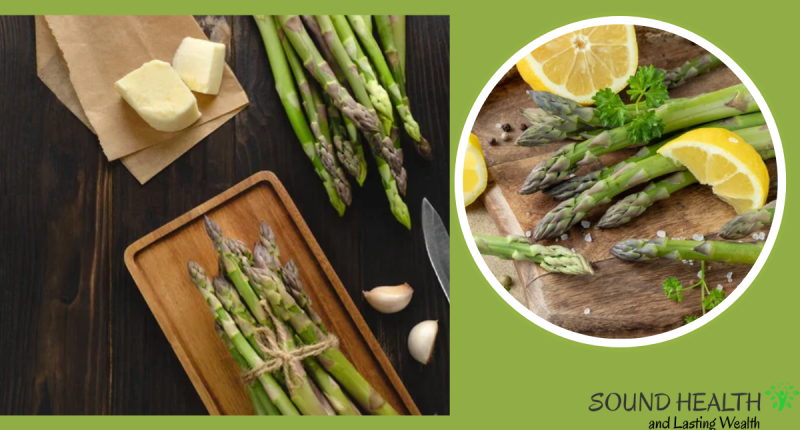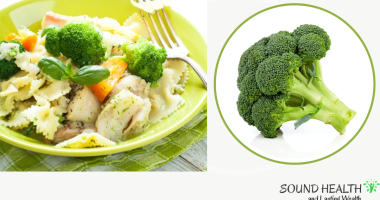Asparagus Health Benefits, Nutrition Facts and Recipes – Asparagus, a delicious and nutritious vegetable with a long history, originated in the eastern Mediterranean region. Through selective breeding, diverse varieties emerged, including green, purple, and white asparagus, each with its unique characteristics, providing a taste bud adventure. These spears are packed with essential vitamins, fiber, and antioxidants, asparagus contributes to overall health. Here are the health benefits, nutrition facts, and recipes for Asparagus.
Health Benefits
This versatile vegetable boasts a treasure trove of health benefits, making it a worthy addition to your diet. Here are the most impressive advantages:
1. Digestive Health: Asparagus acts as a champion for your digestive system. Its high fiber content, particularly the prebiotic inulin, promotes regularity and prevents constipation. Additionally, inulin nourishes beneficial gut bacteria, fostering a healthy gut microbiome.
2. Folate: Folate, a crucial nutrient, shines brightly in asparagus. Pregnant women especially benefit, as it helps prevent neural tube defects in their developing babies. Folate also plays a vital role in DNA synthesis and red blood cell production.
3. Vitamin: Asparagus is a veritable vitamin vault, brimming with vitamins A, C, E, and K. These vitamins contribute significantly to various bodily functions, including immunity, vision, and bone health.
4. Antioxidant: Asparagus packs a powerful punch of antioxidants like lutein, zeaxanthin, carotenes, and cryptoxanthins. These antioxidants act as warriors against free radical damage, protecting our cells and potentially lowering the risk of chronic diseases like cancer and heart disease.
5. Blood Pressure Balancing Act: Potassium, an essential mineral for regulating blood pressure, is generously found in asparagus. This makes asparagus a valuable ally in maintaining healthy blood pressure levels.
6. Cancer-Fighting Potential: The potent antioxidants and other bioactive compounds in asparagus hold promise in the fight against certain types of cancer. While research is ongoing, the potential for asparagus as a cancer-preventive food is exciting.
7. Building Strong Bones: Asparagus provides a double dose of bone-building support: vitamin K and manganese. Vitamin K is crucial for proper bone formation, while manganese helps maintain bone density.
8. Weight Management Ally: Looking for a weight-management friend? Asparagus can be your partner in crime. Its low calorie and fat content, combined with its high fiber content, promotes satiety and helps you manage your weight effectively.
9. Urinary Tract Infection Fighter: Nature’s remedy against urinary tract infections might be hiding in plain sight. Asparagus contains asparagine, which may help prevent UTIs by hindering bacteria from adhering to the bladder wall.
10. Brain Booster: Asparagus offers a brain-boosting benefit, thanks to its abundance of folate. Folate is essential for cognitive function and may help protect against neurodegenerative diseases like Alzheimer’s and dementia.
11. Skin and Hair Savior: Asparagus promotes healthy skin and hair from the inside out. Its vitamin C content contributes to collagen production, a key protein for maintaining skin elasticity and promoting strong hair growth.
12. Anti-Inflammatory Power: Recent studies suggest that asparagus may possess anti-inflammatory properties due to the presence of specific bioactive compounds. While further research is needed, these findings add another potential benefit to the long list of asparagus’ health advantages. Next read: Who should avoid eating cruciferous vegetables? These group of people
Asparagus Nutrition Facts
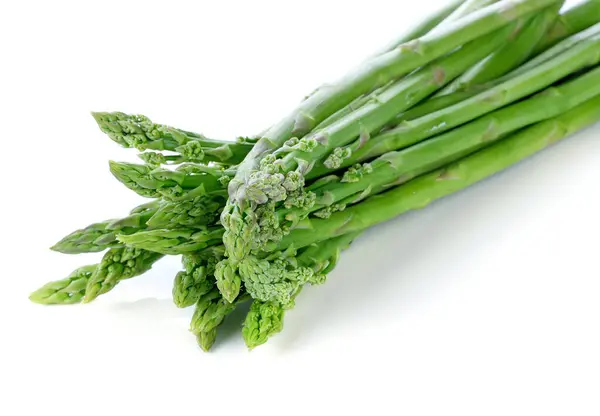
Asparagus Nutrition Facts (per 1 cup (134 grams) raw asparagus):
| Nutrient | Amount | Daily Value (%) |
|---|---|---|
| Calories | 27 | 1% |
| Protein | 2.9 g | 6% |
| Fat | 0.2 g | 0% |
| Carbohydrates | 5.8 g | 2% |
| Fiber | 2.1 g | 8% |
| Sugars | 1.9 g | N/A |
| Vitamin A | 652 IU | 13% |
| Vitamin C | 24.7 mg | 27% |
| Vitamin E | 2.1 mg | 11% |
| Vitamin K | 64.2 mcg | 80% |
| Folate | 89 mcg | 22% |
| Potassium | 202 mg | 4% |
| Magnesium | 20 mg | 5% |
| Phosphorus | 42 mg | 4% |
| Calcium | 22 mg | 2% |
| Iron | 1.8 mg | 10% |
| Zinc | 0.6 mg | 6% |
| Copper | 0.1 mg | 5% |
Source: USDA Food Composition Database
Don’t miss: 11 Low Fiber Vegetables for Constipation – Natural Remedies for Digestive Health
Simple and Healthy Asparagus Recipes
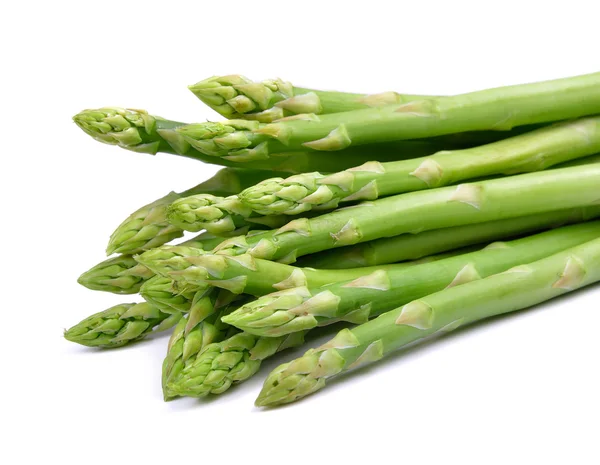
Roasted Asparagus
This classic preparation is quick, easy, and incredibly flavorful. Simply toss asparagus spears with olive oil, salt, and pepper, and roast in the oven until tender-crisp. Experiment with different herbs and spices for additional flavor, such as garlic powder, paprika, or red pepper flakes.
Ingredients:
- 1 pound asparagus spears
- 1 tablespoon olive oil
- 1/2 teaspoon salt
- 1/4 teaspoon black pepper
- Optional: 1/2 teaspoon garlic powder, paprika, or red pepper flakes
Instructions:
- Preheat oven to 400°F (200°C).
- Wash and trim the asparagus spears.
- Toss the asparagus with olive oil, salt, and pepper.
- Spread the asparagus in a single layer on a baking sheet.
- Roast for 10-15 minutes, or until tender-crisp.
- Serve immediately.
Tips:
- For extra flavor, add a squeeze of lemon juice or balsamic vinegar before serving.
- You can also roast asparagus with other vegetables, such as broccoli, carrots, or potatoes.
- If you don’t have a baking sheet, you can roast the asparagus in a skillet over medium-high heat.
Steamed Asparagus
Steaming is another healthy way to cook asparagus, retaining its nutrients and delicate flavor. Steam the spears for just a few minutes until tender-crisp, and dress with a drizzle of lemon juice or balsamic vinegar.
Ingredients:
- 1 pound fresh asparagus spears
- Water
- Salt (optional)
Equipment:
- Steamer basket
- Large pot with lid
- Tongs or slotted spoon
Instructions:
- Wash and trim the asparagus: Rinse the asparagus spears under running water. Trim off the woody ends, typically an inch or two from the bottom. You can also peel the stalks partially or completely if they are thick or fibrous.
- Prepare the steamer: Fill the pot with about an inch of water. Place the steamer basket inside the pot, ensuring it doesn’t touch the water. Bring the water to a boil.
- Steam the asparagus: Arrange the asparagus spears in a single layer in the steamer basket. Cover the pot tightly and steam for 3-5 minutes, depending on the thickness of your asparagus. For thinner asparagus, 3 minutes will suffice; thicker spears may require closer to 5 minutes.
- Test for doneness: Pierce the thickest part of an asparagus spear with a fork. It should be tender-crisp, not mushy. If it’s still too firm, steam for an additional minute or two.
- Season and serve: Remove the asparagus from the steamer basket with tongs or a slotted spoon. Season with salt and pepper to taste, or drizzle with olive oil, lemon juice, or your favorite sauce. Serve immediately.
Tips:
- For even more flavor, add a few cloves of garlic or a bay leaf to the water while steaming.
- You can also steam asparagus bundles tied with kitchen twine for a more elegant presentation.
- If you don’t have a steamer basket, you can improvise by using a colander or even a metal bowl that fits snugly inside the pot.
- Steamed asparagus can be enjoyed on its own, as a side dish for meats or fish, or incorporated into salads, stir-fries, and other dishes.
Grilled Asparagus
Grilled asparagus adds a smoky flavor that complements its natural sweetness. Preheat your grill to medium-high heat, toss the asparagus with olive oil, salt, and pepper, and grill for a few minutes per side until slightly charred and tender.
Ingredients:
- 1 pound asparagus spears
- 1 tablespoon olive oil
- 1/2 teaspoon salt
- 1/4 teaspoon black pepper
Instructions:
- Preheat a grill to medium-high heat.
- Wash and trim the asparagus spears.
- Toss the asparagus with olive oil, salt, and pepper.
- Grill the asparagus for 3-5 minutes per side, or until tender-crisp and slightly charred.
- Serve immediately.
Tips:
- You can also grill asparagus wrapped in prosciutto for a more flavorful dish.
- If you don’t have a grill, you can grill the asparagus in a grill pan over medium-high heat.
Asparagus Salad
For a refreshing and light side dish, combine cooked asparagus with chopped tomatoes, cucumbers, and red onion. Dress with a simple vinaigrette or your favorite dressing.
Ingredients:
- 1 pound asparagus spears
- 1 cup chopped tomatoes
- 1 cup chopped cucumbers
- 1/2 cup chopped red onion
- 1/4 cup olive oil
- 2 tablespoons lemon juice
- 1 tablespoon honey
- 1/2 teaspoon salt
- 1/4 teaspoon black pepper
Instructions:
- Cook the asparagus according to your desired method.
- In a large bowl, combine the cooked asparagus, tomatoes, cucumbers, and red onion.
- In a separate bowl, whisk together the olive oil, lemon juice, honey, salt, and pepper.
- Pour the dressing over the salad and toss to coat.
- Serve immediately.
Tips:
- You can add other ingredients to the salad, such as feta cheese, avocado, or grilled chicken.
- For a more flavorful dressing, add a pinch of garlic powder or Dijon mustard.
- Asparagus Soup: A creamy and comforting soup is a perfect way to enjoy asparagus on a chilly day. Puree cooked asparagus with chicken broth, cream cheese, and seasonings for a delicious and healthy meal.
Also read: Brussels Sprout Health Benefits, Nutrition Facts and Recipes
Other rich and decadent recipes to know
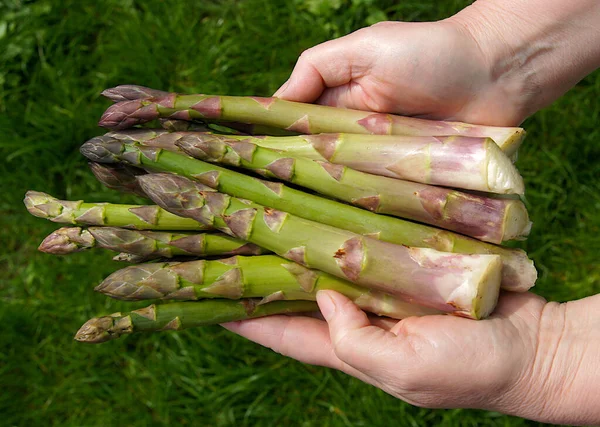
- Asparagus with Hollandaise Sauce: This classic French dish pairs the delicate asparagus with a rich and creamy hollandaise sauce. While hollandaise can be tricky to make, there are many store-bought versions available that are still delicious.
- Asparagus Wrapped in Prosciutto: This elegant appetizer features asparagus spears wrapped in thin slices of prosciutto. Preheat your oven to 375°F, wrap the asparagus spears in prosciutto, and bake for 10-15 minutes until the prosciutto is crisp.
- Creamy Asparagus Pasta: For a quick and easy pasta dish, combine cooked asparagus with your favorite pasta, cream cheese, and Parmesan cheese. Add a pinch of nutmeg and black pepper for additional flavor.
- Asparagus and Goat Cheese Tart: This savory tart is perfect for a light lunch or brunch. Combine a mixture of goat cheese, herbs, and spices with cooked asparagus and spread it over a pre-made pie crust. Bake at 375°F for 30-35 minutes until golden brown.
- Asparagus and Smoked Salmon Frittata: This frittata is packed with protein and flavor. Whisk together eggs, milk, Parmesan cheese, and seasonings. Stir in cooked asparagus and smoked salmon, and pour into a pie plate. Bake at 375°F for 30-35 minutes until set.
-
Asparagus and Shrimp Stir-Fry: Embrace vibrant flavors by stir-frying your asparagus with shrimp and a medley of Asian-inspired ingredients. Combine tender-crisp asparagus with succulent shrimp, crunchy bell peppers, and a savory sauce made with soy sauce, ginger, garlic, and honey. Serve over fluffy rice for a satisfying and flavorful meal.
-
Creamy Asparagus Risotto: Indulge in a luxurious risotto, where creamy rice is infused with the delicate flavor of asparagus. Sauté chopped shallots and garlic, then add arborio rice and toast it slightly. Gradually add warm broth, stirring frequently until the rice becomes creamy. Stir in cooked asparagus, Parmesan cheese, and a touch of cream for an extra decadent finish.
-
Asparagus and Goat Cheese Quiche: Combine the earthy flavor of asparagus with creamy goat cheese in a savory quiche. Start with a pre-made pie crust, then fill it with a mixture of whisked eggs, milk, goat cheese, herbs, and cooked asparagus. Bake until the quiche is golden brown and the filling is set. This dish is perfect for brunch, lunch, or a light dinner.
-
Asparagus and Sun-dried Tomato Frittata: Elevate your breakfast or brunch game with a vibrant asparagus and sun-dried tomato frittata. Whisk together eggs, milk, Parmesan cheese, chopped herbs, and chopped sun-dried tomatoes. Add in cooked asparagus and pour the mixture into a pie plate. Bake until the frittata is set and golden brown. Enjoy a slice warm or at room temperature.
-
Asparagus and Feta Pasta: For a quick and satisfying pasta dish, combine cooked asparagus with crumbled feta cheese, cherry tomatoes, and a simple lemon-garlic sauce. Toss everything together with cooked pasta, such as linguine or fettuccine, and sprinkle with fresh parsley for a burst of color and freshness.
-
Spicy Asparagus Soup: Embrace the heat with a spicy asparagus soup. Sauté onions and garlic, then add chopped asparagus and vegetable broth. Simmer until the asparagus becomes tender. Puree the soup in a blender until smooth, then add your preferred level of spice with chili flakes or cayenne pepper. Garnish with a dollop of sour cream and a sprinkle of smoked paprika for a smoky element.
These are just a few ideas to get you started. With a little creativity, you can easily create your own delicious and unique asparagus dishes.
Don’t miss: Cauliflower Health Benefits, Nutrition Facts and Recipes
